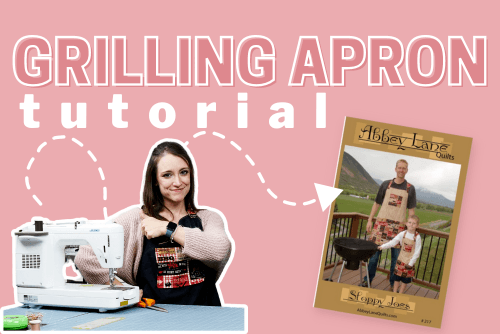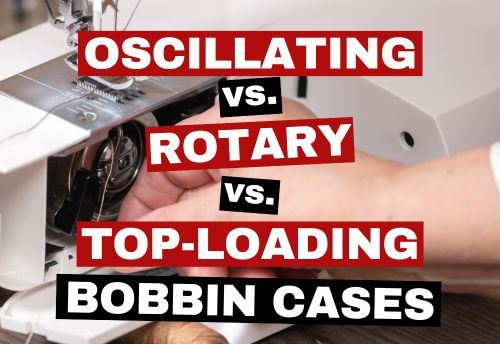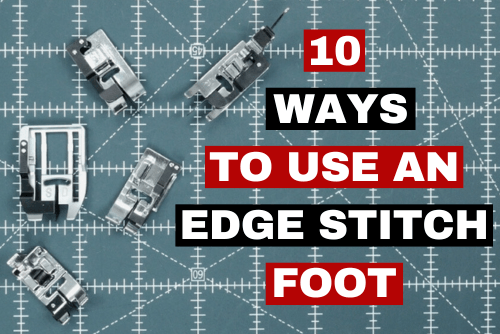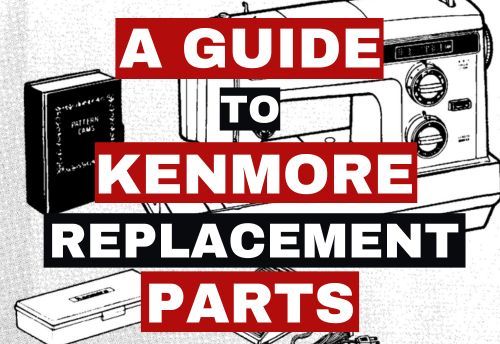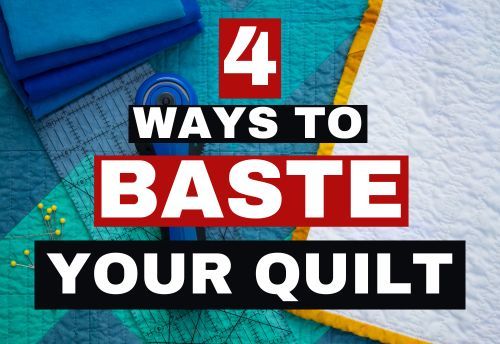Completing your first embroidery project is so fulfilling. It can also feel a little overwhelming. It doesn't have to be.
In the video above, you can walk with me during a complete project. I will take you through getting everything around for your embroidery project, setting up your machine, and doing a stitch out. In the end, I show you how to take your stitch out and use it in a project - sewing an adorable drawstring gift bag!
We have released 5 videos prior to this one, focusing on some key basics of embroidery. It is recommended to go back and check out each individual topic; however, I also want to do a quick synopsis of what you can learn!
Choosing An Embroidery Machine
There are so many wonderful embroidery machines out there. Between brands and price differences, when you're brand new to embroidery, it can make your head spin. I suggest breaking it down by asking yourself a few questions.
- What will I be embroidering?
- Do I want to embroider large designs?
- Are a large variety of fonts/designs a must?
- Do I want a sewing and embroidery machine or solely an embroidery machine?
- What is my budget?
- Do I want an entry, beginner friendly machine or an advanced full-featured machine?
Personally, I like to start out with, "What's my budget?" and work with that. As you move up in price, you are going to get more features. Jump thread cutting, advanced needle threading, a large embroidery field - just a few features to consider when searching for your first embroidery machine.
For more information to consider when choosing an embroidery machine, check out episode 1 of our Beginner's Guide to Embroidery Series:
Stabilizer For Your Project
First things first, stabilizer. In order for the machine to accomplish a nice stitch out, stabilizers are used when embroidering. This, essentially, is a foundation for your stitches. Depending on the material you are using, the stabilizer will vary. When working on your first embroidery project, I suggest using a sturdy, woven fabric. I, personally, find it the easiest to hoop. A good stabilizer option for this fabric is a Tear-Away. If you decide to embroider a knit fabric, a Cut-Away would be recommended.
Need more information on stabilizers? Take a peek at episode 2 of our Beginner's Guide to Embroidery Series:
Needle For Your Embroidery Project
Needles, needles, needles. There are so many different kinds; however, you need to make sure that you are using the appropriate one for your embroidery project. Depending on the fabric and thread you use, you may need to swap out your needle. A common recommendation is a size 11 embroidery needle. An embroidery needle has a wider eye than a universal needle. This allows the thread to pass through more easily and it decreases thread breakage, making your embroidery project hassle-free.
To learn more about embroidery needles, check out episode 3 of our Beginner's Guide to Embroidery series:
Thread For Your Embroidery Project
There are many choices when it comes to needles. It's the same for the thread.
Polyester and rayon thread are common options when it comes to embroidery. Both are great; however, each has its benefits.
There are also many brands to choose from. Some common options are Madeira, Hemingworth, Isacord, and Aurifil.
In episode 4 of our Beginner's Guide to Embroidery, learn more about which embroidery thread is best for your embroidery project:
Hooping Fabric
Hooping your fabric can be interesting. It takes some practice, but don't worry, you'll get it. So what is hooping?
You use a frame or hoop to secure your fabric - make it taut- so that your embroidery machine can stitch out a design.
Basic tips for hooping are:
- Lay the outer ring on a flat surface.
- Place your stabilizer. You want your stabilizer to be slightly larger than the hoop.
- Place your fabric on the stabilizer. This, too, you want larger than the hoop, if possible. (I will be showing you another method for when this is not possible.)
- Smooth out your fabric.
- Place on the inner ring.
- Start from the top, carefully pushing on the inner ring. Work your way down to the screw.
- If it is too loose or too tight, adjust the screw. The correct tension is acheived when it is taut, but not too tight. You will want to start over since you had to adjust the screw.
- You want to acheive almost a drum effect when you tap on it.
Want step by step instructions on how to hoop your fabric for your embroidery project? Episode 5 of our Beginner's Guide to Embroidery series will help you out:
Setting Up Your Embroidery Machine
When embroidering for the first time, it is very important to read your machine's manual. It is going to provide details that you don't want to miss, including threading your machine, how you begin embroidering, how to select designs, just to name a few.
I am happy to answer any questions you have, but you will be amazed at what you can learn from that little manual. I see beautiful stitch outs in your future! Happy embroidering, everyone! Until next time.



